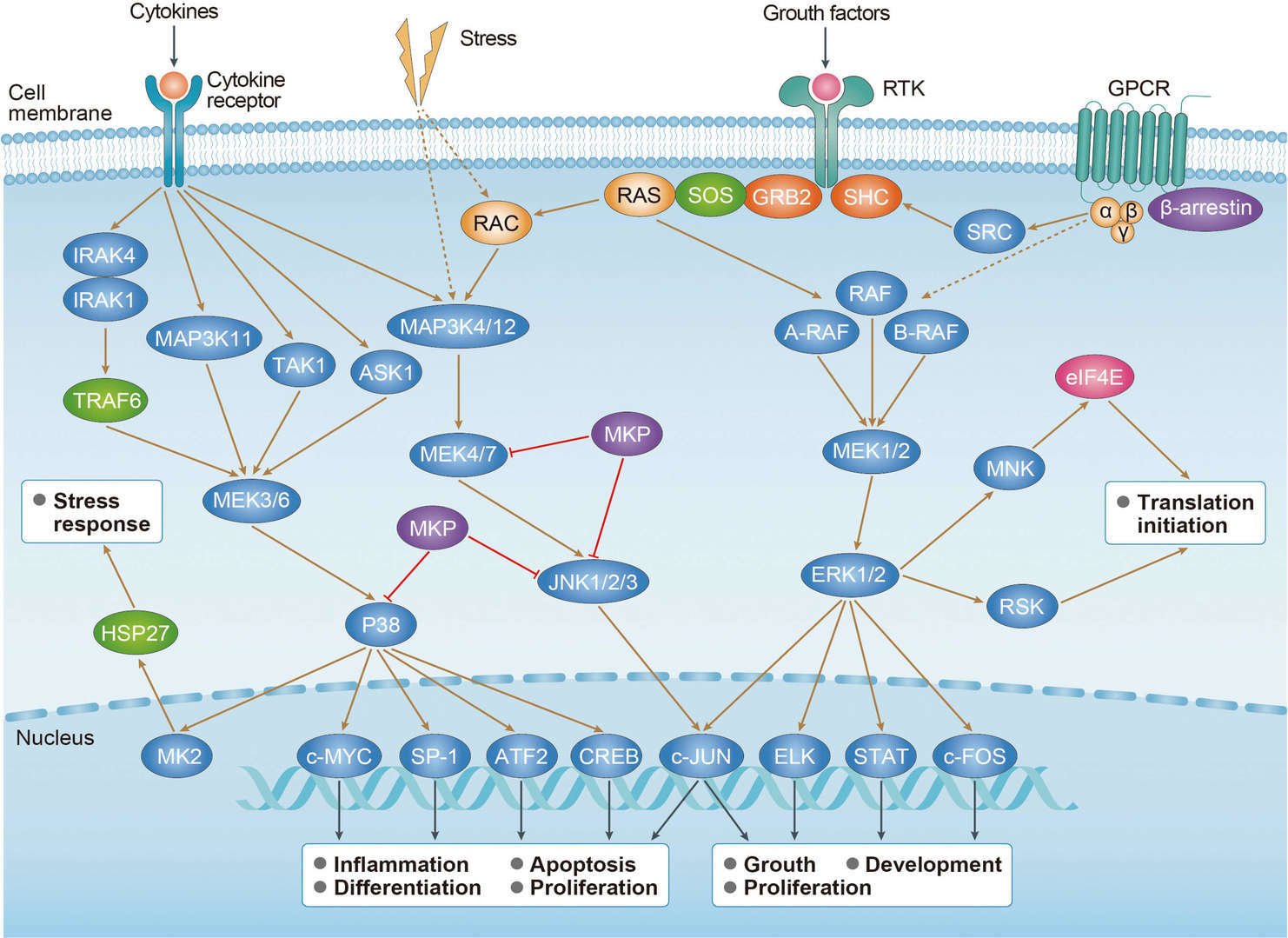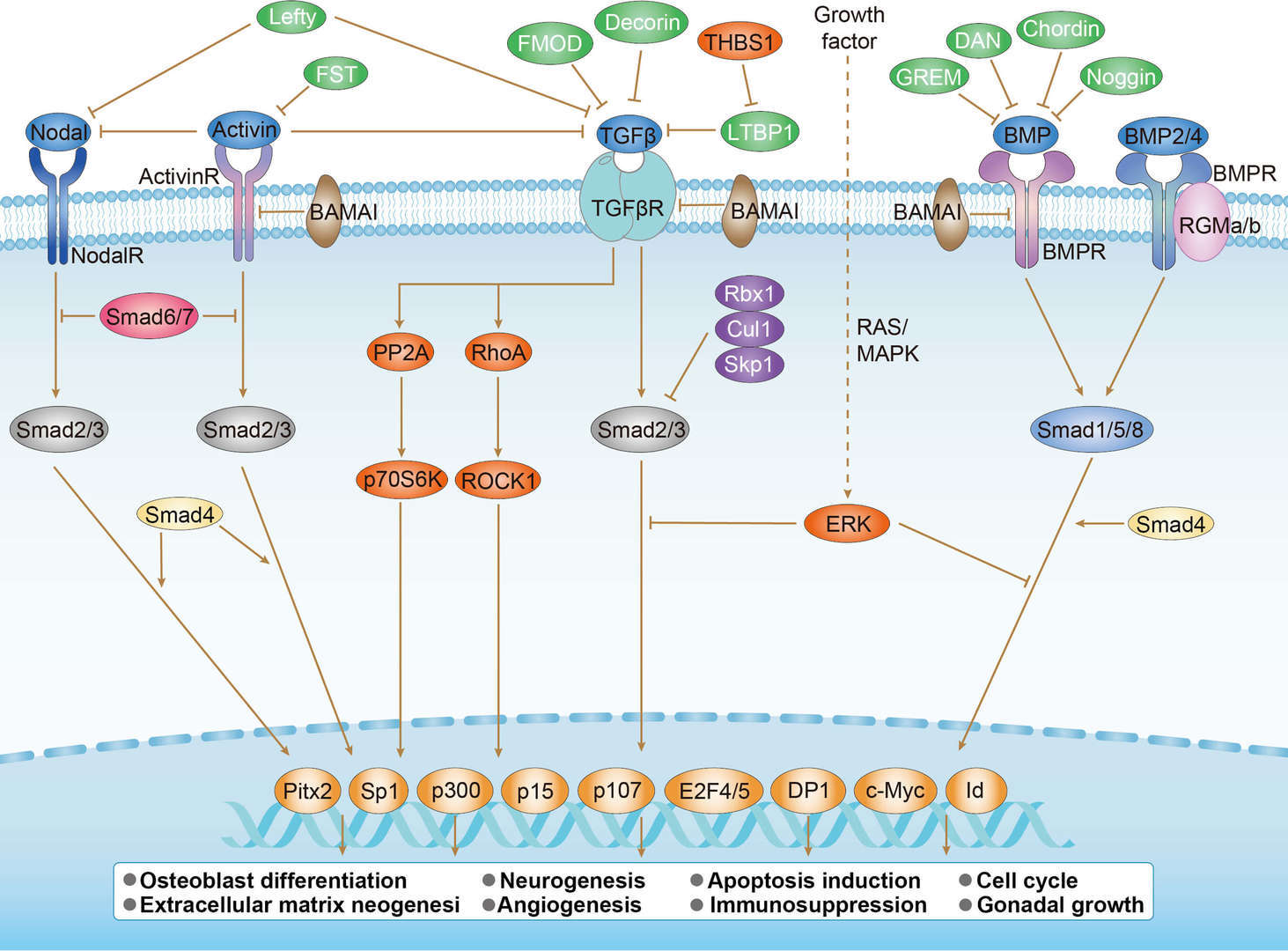Mouse Anti-SP1 Recombinant Antibody (VS3-CJ483)
CAT#: VS3-CJ483
This product is a mouse antibody that recognizes human SP1.











Specifications
- Immunogen
- Recombination protein from the human SP1
- Host Species
- Mouse
- Type
- Mouse IgG1, κ
- Specificity
- Human SP1
- Species Reactivity
- Human
- Applications
- WB, IF, FC
- Conjugate
- Unconjugated
Product Property
- Purification
- Protein G affinity purified
- Purity
- >95% as determined by SDS-PAGE
- Format
- Liquid
- Buffer
- PBS, pH 7.3.
- Preservative
- 0.09% Sodium Azide
- Storage
- Store at 4°C for short term. Aliquot and store at -20°C for long term. Avoid repeated freeze/thaw cycles.
Applications
- Application Notes
- This antibody has been tested for use in Western Blot (1:1000), Immunofluorescence (1:25), Flow Cytometry (1:25).
Target
- Alternative Names
- Sp1 transcription factor
- Gene ID
- 6667
- UniProt ID
- P08047
- Sequence Similarities
- Belongs to the Sp1 C2H2-type zinc-finger protein family.
- Cellular Localization
- Cytoplasm, Nucleus
- Post Translation Modifications
- Phosphorylated on multiple serine and threonine residues. Phosphorylation is coupled to ubiquitination, sumoylation and proteolytic processing. Phosphorylation on Ser-59 enhances proteolytic cleavage. Phosphorylation on Ser-7 enhances ubiquitination and protein degradation. Hyperphosphorylation on Ser-101 in response to DNA damage has no effect on transcriptional activity. MAPK1/MAPK3-mediated phosphorylation on Thr-453 and Thr-739 enhances VEGF transcription but, represses FGF2-triggered PDGFR-alpha transcription. Also implicated in the repression of RECK by ERBB2. Hyperphosphorylated on Thr-278 and Thr-739 during mitosis by MAPK8 shielding SP1 from degradation by the ubiquitin-dependent pathway. Phosphorylated in the zinc-finger domain by calmodulin-activated PKCzeta. Phosphorylation on Ser-641 by PKCzeta is critical for TSA-activated LHR gene expression through release of its repressor, p107. Phosphorylation on Thr-668, Ser-670 and Thr-681 is stimulated by angiotensin II via the AT1 receptor inducing increased binding to the PDGF-D promoter. This phosphorylation is increased in injured artey wall. Ser-59 and Thr-681 can both be dephosphorylated by PP2A during cell-cycle interphase. Dephosphorylation on Ser-59 leads to increased chromatin association during interphase and increases the transcriptional activity. On insulin stimulation, sequentially glycosylated and phosphorylated on several C-terminal serine and threonine residues.
Acetylated. Acetylation/deacetylation events affect transcriptional activity. Deacetylation leads to an increase in the expression the 12(s)-lipooxygenase gene though recruitment of p300 to the promoter.
Ubiquitinated. Ubiquitination occurs on the C-terminal proteolytically-cleaved peptide and is triggered by phosphorylation.
Sumoylated with SUMO1. Sumoylation modulates proteolytic cleavage of the N-terminal repressor domain. Sumoylation levels are attenuated during tumorigenesis. Phosphorylation mediates SP1 desumoylation.
Proteolytic cleavage in the N-terminal repressor domain is prevented by sumoylation. The C-terminal cleaved product is susceptible to degradation.
O-glycosylated; Contains 8 N-acetylglucosamine side chains. Levels are controlled by insulin and the SP1 phosphorylation states. Insulin-mediated O-glycosylation locates SP1 to the nucleus, where it is sequentially deglycosylated and phosphorylated. O-glycosylation affects transcriptional activity through disrupting the interaction with a number of transcription factors including ELF1 and NFYA. Also inhibits interaction with the HIV1 promoter. Inhibited by peroxisomome proliferator receptor gamma (PPARgamma).
- Protein Refseq
- NP_001238754.1; NP_003100.1; NP_612482.2
- Function
- Transcription factor that can activate or repress transcription in response to physiological and pathological stimuli. Binds with high affinity to GC-rich motifs and regulates the expression of a large number of genes involved in a variety of processes such as cell growth, apoptosis, differentiation and immune responses. Highly regulated by post-translational modifications (phosphorylations, sumoylation, proteolytic cleavage, glycosylation and acetylation). Binds also the PDGFR- alpha G-box promoter. May have a role in modulating the cellular response to DNA damage. Implicated in chromatin remodeling. Plays a role in the recruitment of SMARCA4/BRG1 on the c-FOS promoter. Plays an essential role in the regulation of FE65 gene expression. In complex with ATF7IP, maintains telomerase activity in cancer cells by inducing TERT and TERC gene expression. Isoform 3 is a stronger activator of transcription than isoform 1. Positively regulates the transcription of the core clock component ARNTL/BMAL1.
Plays a role in the recruitment of SMARCA4/BRG1 on the c-FOS promoter. Plays a role in protecting cells against oxidative stress following brain injury by regulating the expression of RNF112 (By similarity).
Customer Review
There are currently no Customer reviews or questions for VS3-CJ483. Click the button above to contact us or submit your feedback about this product.
Submit Your Publication
Published with our product? Submit your paper and receive a 10% discount on your next order! Share your research to earn exclusive rewards.
Related Signaling Pathways
Downloadable Resources
Download resources about recombinant antibody development and antibody engineering to boost your research.
Product Notes
This is a product of Creative Biolabs' Hi-Affi™ recombinant antibody portfolio, which has several benefits including:
• Increased sensitivity
• Confirmed specificity
• High repeatability
• Excellent batch-to-batch consistency
• Sustainable supply
• Animal-free production
See more details about Hi-Affi™ recombinant antibody benefits.
Datasheet
MSDS
COA
Certificate of Analysis LookupTo download a Certificate of Analysis, please enter a lot number in the search box below. Note: Certificate of Analysis not available for kit components.
Protocol & Troubleshooting
We have outlined the assay protocols, covering reagents, solutions, procedures, and troubleshooting tips for common issues in order to better assist clients in conducting experiments with our products. View the full list of Protocol & Troubleshooting.
Secondary Antibody
- CAT
- Product Name
Recommended Dilution Buffer
- CAT
- Product Name
See other products for "SP1"
Select a product category from the dropdown menu below to view related products.
| CAT | Product Name | Application | Type |
|---|---|---|---|
| NAB-1233-VHH | Recombinant Anti-human SP1 VHH Single Domain Antibody | IHC, ICC, IP, ChiP, Neut | Llama VHH |
| CAT | Product Name | Application | Type |
|---|---|---|---|
| MOB-2514z | Mouse Anti-SP1 Recombinant Antibody (clone 22G3) | WB, IHC, ELISA | Mouse IgG1 |
| VS3-QX1046 | Mouse Anti-SP1 Recombinant Antibody (clone 1326CT463.109.176) | WB, ICC, FC | Mouse IgG1 |
| VS3-FY1376 | Recombinant Rabbit Anti-SP1 Antibody (clone R01-9G6) | WB, IHC-Fr, IHC-P, ICC, IF | Rabbit IgG |
| VS3-FY1377 | Recombinant Rabbit Anti-SP1 Antibody (clone R06-9I9) | WB, IHC-Fr, IHC-P, ICC, IF, IP | Rabbit IgG |
| VS13-YC1100 | Rabbit Anti-SP1 Recombinant Antibody (VS13-YC1100) | WB, ICC, IF, IHC-P | Rabbit IgG |
| CAT | Product Name | Application | Type |
|---|---|---|---|
| MOR-3379 | Hi-Affi™ Recombinant Rabbit Anti-SP1 Monoclonal Antibody (DS3379AB) | WB, IHC, ICC | IgG |
| CAT | Product Name | Application | Type |
|---|---|---|---|
| VS-0325-XY2154 | Anti-SP1 Immunohistochemistry Kit | IHC | |
| VS-0525-XY6834 | Anti-Mouse SP1 Immunohistochemistry Kit | IHC | |
| VS-0525-XY6833 | Anti-Human SP1 Immunohistochemistry Kit | IHC | |
| VS-0525-XY6835 | Anti-Bovine SP1 Immunohistochemistry Kit | IHC |
Popular Products

Application: ELISA, IP, FC, FuncS, Neut, IF, ICC

Application: FC, IP, ELISA, Neut, FuncS, IF, IHC

Application: ELISA, FC, IP, FuncS, IF, Neut, ICC

Application: WB, FuncS, IF, Neut, ELISA, FC, IP

Application: Neut, ELISA, IF, IP, FuncS, FC, ICC
-2.png)
Application: WB, ELISA, FC, IHC, IP

Application: ELISA, FC, WB, FuncS

Application: ELISA, IHC, FC, IP, IF, Inhib
For research use only. Not intended for any clinical use. No products from Creative Biolabs may be resold, modified for resale or used to manufacture commercial products without prior written approval from Creative Biolabs.
This site is protected by reCAPTCHA and the Google Privacy Policy and Terms of Service apply.














 MAPK Signaling Pathway
MAPK Signaling Pathway
 TGF-β Signaling Pathway
TGF-β Signaling Pathway
















